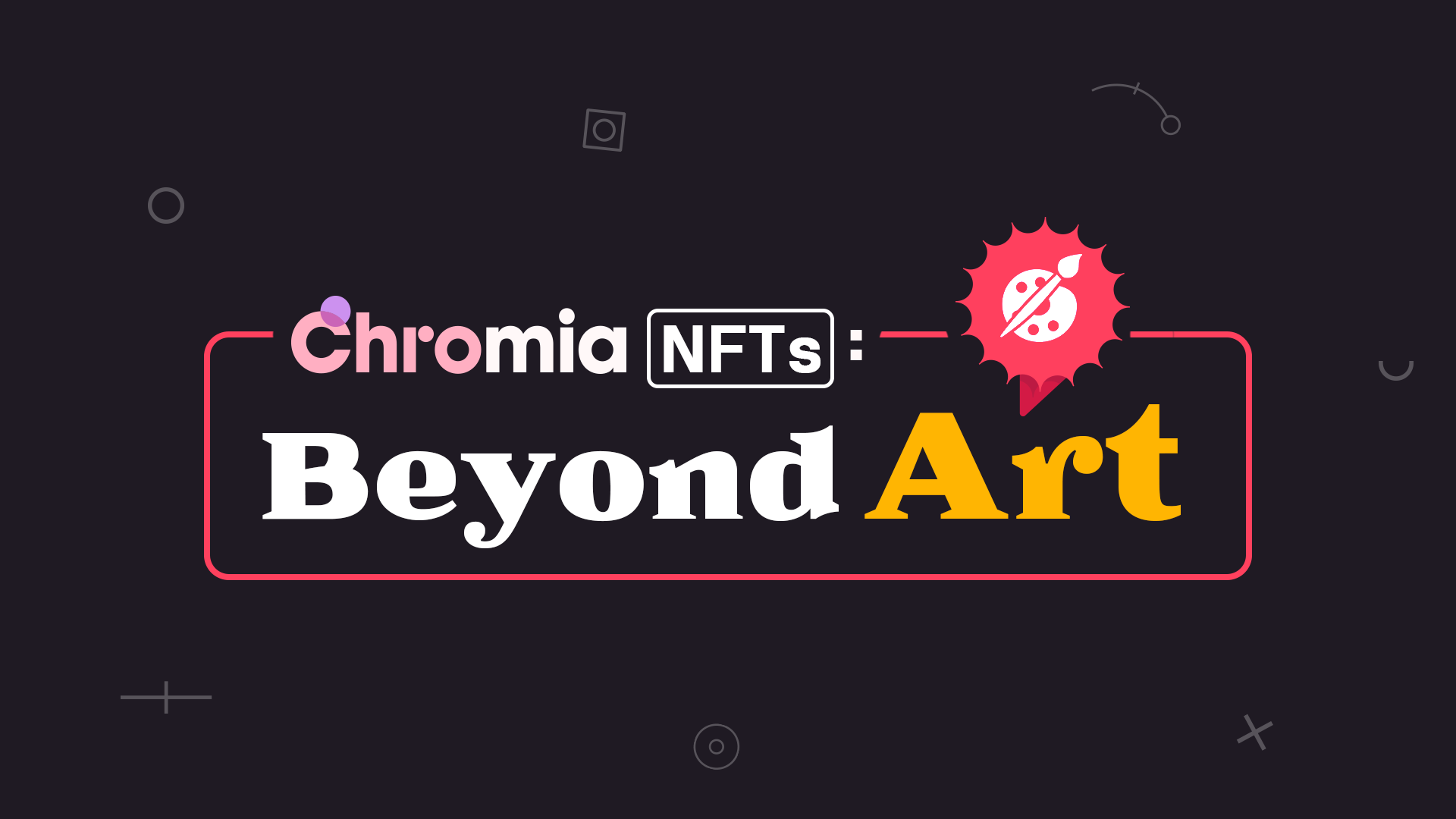When most people think of NFTs, the first thing that comes to mind is art. In fact, if you asked someone who isn’t involved in blockchain what NFTs are, they might even tell you that they’re about digital art, licensing, jpegs, monkeys…
But, there is so much more to NFTs, and at Chromia we want entrepreneurs, developers, and customers to benefit from them.
What is an NFT?
First things first, what is an NFT? NFT stands for “non-fungible token”. The words “non” and “token” probably make sense, but what of “fungible”?
“Fungible” essentially means that one is just like the other. Money is highly fungible. One dollar is one dollar, and my one dollar has exactly the same value and utility as your one dollar.
If something is non-fungible, it means it matters which one you have. If I borrow a dollar from you, when I pay you back you won’t bother to check if it's the same dollar you gave to me. However, if I babysat your child and gave you back a different one, you would definitely notice and care! That is because money is fungible, and people are non-fungible.
So, non-fungible tokens are tokens that are distinguishable from each other and have their own unique characteristics.
Why Chromia?
Chromia Originals
We are developing a next-generation NFT standard called Originals. While it can fulfill the same use cases and functionalities of current NFTs, it will also offer enhanced features that will open new possibilities.
Relational Blockchain
Most blockchains are difficult to query. If you were an artist and wanted to give an airdrop to addresses that specifically own at least 3 pieces of art from at least 2 of your previous collections, you would have to determine eligibility manually or rely on a third-party indexer.
Chromia allows you to query, as in filter, which gives you way more functionality and makes it suitable for high volume and highly specific uses. That’s because of the relational database part of “relational blockchain.”
Art and NFTs are a natural fit, and have given artists the opportunity to continue to benefit from their work, but we think there’s more that can be done with this technology.
Gaming
If you’ve been in the Chromia ecosystem for a while you’ll be aware of the games we’re involved in, and in working with them we are building out new ways for gamers and developers to use NFTs.
Firstly, our NFT metadata is stored on-chain, not on an external (and centralized) host, meaning they can’t be taken down—a win for decentralization.
Secondly, our NFTs are dynamic and can contain logic. This allows developers to put rules into their NFTs and allows the NFTs to be upgraded.
What does this mean? Let’s say you have an NFT of a car, and in the game, you make a lot of improvements to your car. The NFT can be upgraded to reflect these modifications.
You can also add rules into the NFTs, for example, that a red sword and blue shield are incompatible with each other and can’t be used together by a character.
This gives developers and gamers functionality similar to what they are used to, with the added benefit of ownership and being able to sell their NFTs.
Clothing
Another emerging use case for NFTs is clothing and fashion. We’ve already seen some fashion houses make steps into NFTs, but there’s so much to explore!
We’ve already partnered with fashion companies to bring digital versions of their favorite items on-chain, and in doing so to open up a new way of interacting with clothing, from your garments serving as membership and giving you governance rights, for example, to checking the authenticity of an item.
We also see potential in using NFTs to track garments throughout their lifespan. Buyers can verify that a potential purchase was manufactured using sustainable methods, and could even be rewarded for donating or recycling the item when they no longer need it.
Real Estate and Land Registration
Property registration processes can be inefficient, and traditional paper and digital records can be susceptible to tampering and loss. A pilot sponsored by the Inter-American Development Bank explored the use of Chromia to improve land registration processes. The report concluded that “blockchain technologies in the context of property registration can offer many benefits”. We agree!
In addition to record keeping, blockchain can also be used to issue NFTs that represent ownership. This presents a variety of new and interesting possibilities.
NFTs can be fractionalized, allowing many different people to own small pieces of a property. With traditional methods, this creates a mountain of paperwork and extensive legal proceedings. With blockchain, there is always an up-to-date and accurate account of who owns what.
NFTs for the Future
We’re excited by the potential of NFTs and blockchain to transform and streamline the way we “do” ownership. We see this enthusiasm mirrored in many industries, and are thrilled to have partnered with numerous companies and organizations while building out a blockchain that can operate at scale.
In addition to the use cases discussed above and the numerous others already being explored across the cryptoverse, there will also be new applications that have yet to be imagined. Non-fungible tokens are just getting started, and so are we!
